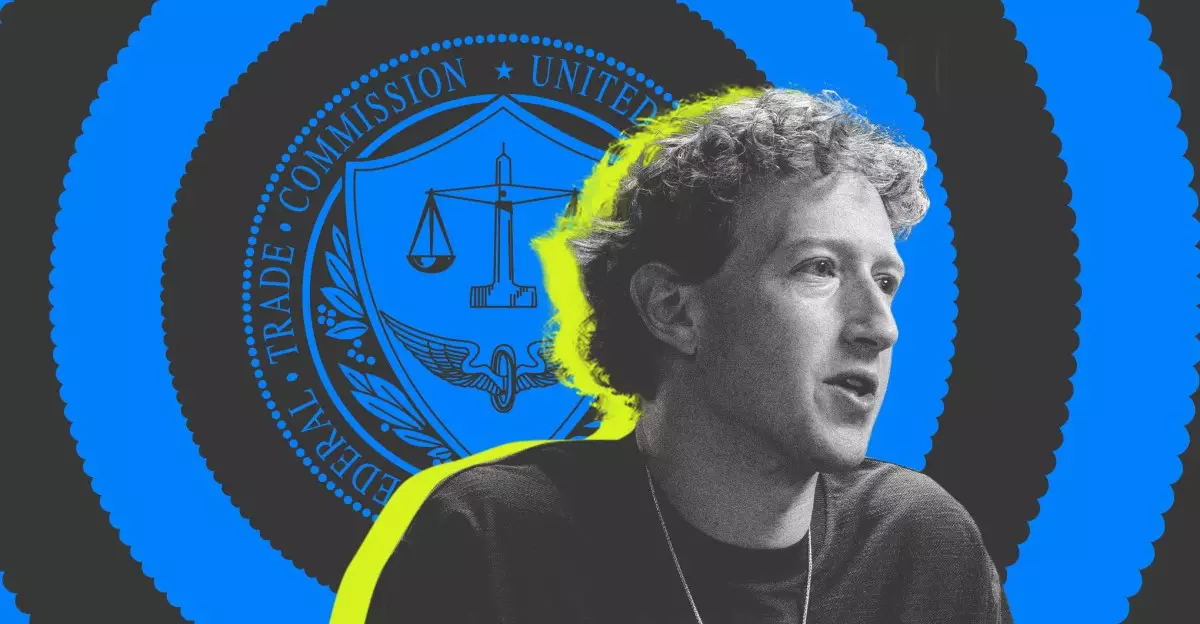In a world where social media shapes how we communicate, the decisions made by Mark Zuckerberg and his team at Meta resonate beyond the boardroom and courtroom. Zuckerberg recently found himself on the witness stand, engaging in an antitrust trial that delves deep into the formation and expansion of Meta’s social media empire. The trial, brought forth by the Federal Trade Commission (FTC), explores the significance of acquisitions such as Instagram and WhatsApp and poses critical questions about market dominance. The outcomes of these legal struggles could set sweeping precedents for how companies grow and compete in the digital age.
Zuckerberg’s testimony provided fascinating insights into the fluid nature of the social media landscape. He defined the market—not as a rigid entity—but as one that continuously evolves. He acknowledged competitors like TikTok and YouTube as significant threats in a “connected world” dominated by dynamic user preferences. Yet, the underlying narrative reveals a complex interplay of strategy and fear, proposing an alternate path where Meta could have taken a different direction entirely—one that may have resulted in a less monopolistic landscape.
The Unseen Alternatives: What-Ifs of Meta’s Strategy
A discussion of what could have been inherently changes our understanding of the choices made. When Zuckerberg reminisced about an unfulfilled bid for Snapchat that could have cost Meta $6 billion, one cannot help but wonder how the digital ecosystem might have transformed had Evan Spiegel accepted the offer. A hypothetical acquisition could have stifled Snapchat’s independence and growth trajectory while simultaneously augmenting Meta’s social media influence. The ramifications extend far beyond monetary valuation; they delve into the core fabric of competition and innovation.
Consider Zuckerberg’s unconventional proposal to wipe users’ friend lists—a bold attempt to rekindle the original magic of Facebook. Such radical rethinking reflects more than just a desire for renewal; it signifies a deep-rooted anxiety about stagnation in user engagement and growth. If Meta had pivoted to create a feed of solely advertisements, this shift would have further alienated users, possibly leading to the emergence of new platforms designed to meet user needs. Each of these contemplations indicates that, beneath Meta’s polished exterior, there lies a vulnerable entity grappling with its identity and market position.
Internal Dynamics: The Communication that Shaped Meta
The trial revealed more than just strategic decisions; it unearthed internal communications that depict a company in a constant state of recalibration. The evidence presented illuminated Zuckerberg’s anxieties regarding Meta’s relevance. Discussions amongst top executives unveiled fears that Instagram’s meteoric rise would juxtapose METAs stagnancy, emphasizing an urgency to innovate or acquire. In this respect, the anxiety driving Zuckerberg’s decisions reflects an essential truth: the rapid innovation cycle pushes tech giants to prioritize acquisition as a means of survival.
The FTC’s portrayal of Meta’s growth via acquisitions raises critical questions about the ethical implications of such strategies. If a company can secure its dominance primarily through the acquisition of potential rivals, it stunts competition and potentially dampens the entrepreneurial spirit required for innovation. Zuckerberg’s defense argues that these acquisitions enhanced the capabilities of the tools we use daily, suggesting that such strategic maneuvers are not just protective but productive.
The Faulty Facade of Market Definitions
Central to the FTC’s case is their market definition, which they argue Meta has manipulated through acquisitions and advertising strategies. The attempt to craft a specific narrative around personal social networking services positions Meta as a villain in the eyes of regulatory bodies. However, Zuckerberg challenged this characterization, arguing for a broader view of market fluidity and interconnectedness among platforms. The question that hovers is whether the FTC’s rigid market definition restricts the natural competition and innovation that drives the industry forward.
Meta argues it operates in a competitive landscape filled with multifaceted players, and limiting the focus solely to established giants does not accurately capture the true essence of social interaction in a digital age. Zuckerberg’s defense hinges on the notion that market definitions need to evolve alongside technology, reflecting the reality that today’s competition does not solely exist within conventional boundaries.
Implications for Future Market Dynamics
The ongoing trial exemplifies the tension between regulatory oversight and the need for innovation in technology. While Zuckerberg’s strategies may have advanced Meta’s growth, they also raise important questions about sustainability and fairness. As we witness the unfolding of this legal battle, it is evident that the outcome may reshape not only Meta’s future but also the landscape of antitrust regulation in the tech sphere.
In a rapidly changing digital landscape, the struggle between safeguarding competition and encouraging innovation remains at the forefront, posing profound questions about the ethics of power in the tech industry. As this trial draws attention, stakeholders from all sectors must ponder the trajectory of competition in an era marked by fierce rivalry, evolving user preferences, and relentless technological advancement.

